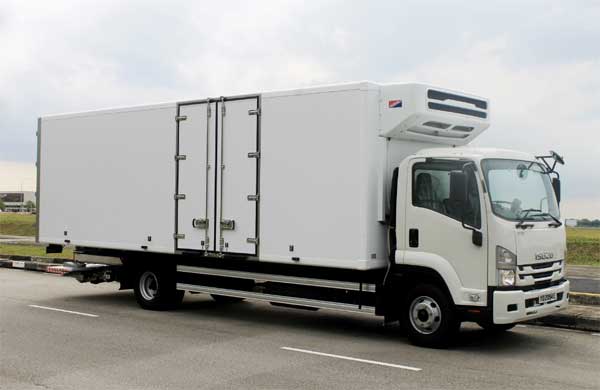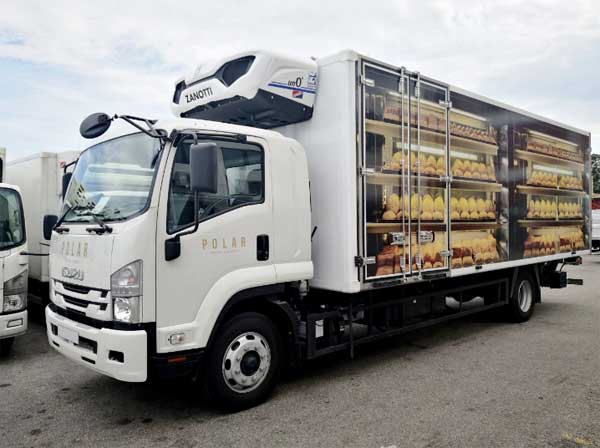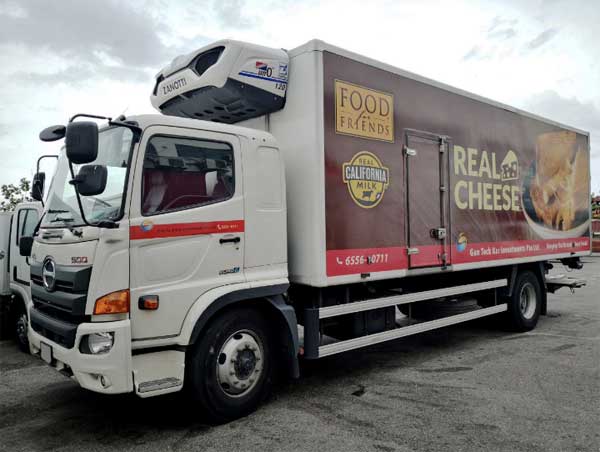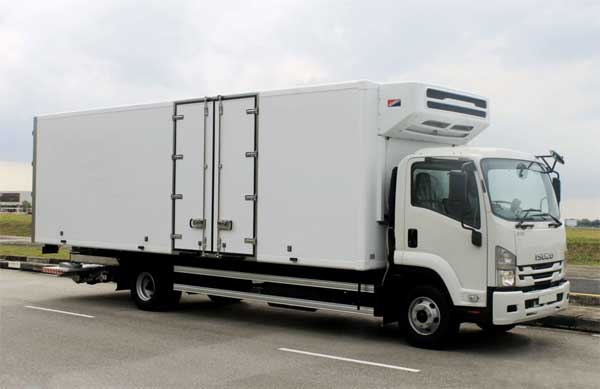Even if we are not master chefs, the refrigerator is one of our most prized possessions in the kitchen. Refrigerators are the best companions that everyone at home relies on throughout the day, from keeping our milk chilled in the morning to ice cream after dinner. But what about transportation of refrigerated foods to the comfort of your homes? That is where the Zanotti Zero Direct Drive comes into play. Zanotti provides refrigerated trucks services that meet the needs of the distribution industry by providing the most flexibility in refrigerated product temperature management.

The Zanotti Zer0 Truck Refrigeration Systems are the highest quality solution available for all sizes of Insulated Vans, delivering the temperatures you require even when the temperature outside reaches up to 40°C. Zanotti transport refrigeration units are available for all vehicle makes and models and provide complete temperature control between -29°C and 15°C (-20°F/60°F). Zer0 Refrigeration Systems operate with the condensing unit mounted on the vehicle’s roof, allowing maximum airflow to cool the refrigerant. They are critical for businesses that require freezing temperatures all year, including on the hottest days of summer. They are Direct-Drive Units, which means that the refrigerant is pumped through the system by the engine compressor. Zanotti offers a wide range of units. These include battery units, invisible units, and direct drive units in split and monoblock configurations. Zanotti truck refrigeration systems singapore can effectively meet your needs, for sure!
Product Features
The first compressor, located in the vehicle’s engine compartment and connected to it, ensures the machine’s operation in “road mode.” Mounted beneath the beautiful body of the trucks with the innovative design of the condensing unit is the most vital compressor. It is powered by an external electrical source when the van is parked. These are its product features:
- Easy-to-use driver interface in the cabin
- Telematics-compatible
- With removable side panels, it is simple to install and service.
- The standard warranty is two years.
- Configuration of light commercial vehicles for a wide range of refrigerated applications.
- On the road, a direct drive is used, with the electric grid acting as a backup.
- Reductions in refrigerant charge and maintenance costs
- Low level of noise
- Proved to be reliable and perform well
- For vans, roof-mounted
- Fitted with vehicles that have original A/C
- Defrosting can be automatic or manual.
- Condensation Draining Kit and Unit Hardware
- In-Cab Mounted Electrical Controller
- For refrigerated truck bodies, nose-mounted
- Power consumption is minimal.
Optional:
- Recovery of hot gas
- Different voltages are available upon request.
- Standby Power Supply
- Multi-temperature
- Kit for mounting a compressor
The Zanotti Zero Direct Drive range – designed for high-tech refrigerated trucks services
The range is available in a split version, which includes the following models:
| Models | Max power | Max cell volume |
|---|---|---|
| Z200 | 2.6kW | 16m3 |
| Z250 | 3.2kW | 19m3 |
| Z350 | 3.2kW | 21m3 |
| Z380 (multi-temperature) | 3.9kW | 28m3 |
It meets all of the performance cases required by a medium-sized van transport.
So, how does Zanotti Zer0° Truck Refrigeration Systems Range work?
By using a double compressor, the models’ design provides efficient and continuous operation.
The z380s multi-temperature model is part of the zero range, and it meets the needs of transporting products in multiple compartments and at different temperatures.
There are various configurations available in terms of evaporators and the number of fans.
The standard installation is a quick and easy placement of the condensing unit on the wall behind the vehicle cabin or the roof without affecting the vehicle line.
The ultra-thin evaporator (max 19.4 cm) is mounted directly to the cell’s ceiling, eliminating the need to reduce the loading volume.
The standard equipment includes the kits for electrical connection to the vehicle battery, condensation drain kits, and the cables for mains connection (max 10 m).
The zer0° models’ operation, performance, and hot gas defrosting are always controllable and modified via a control unit provided in the cabin with a user interface, ensuring that the product will be at precisely the right temperature for the duration of the trip.
The Z380 Multi and Z380 Multi (Narrow Evap) models can meet today’s low environmental impact refrigeration needs for light commercial vehicles.
These units have additional evaporators to transport products with different temperature requirements in separate zones. They are available in a variety of configurations to accommodate a wide range of applications.
Zanotti’s Models
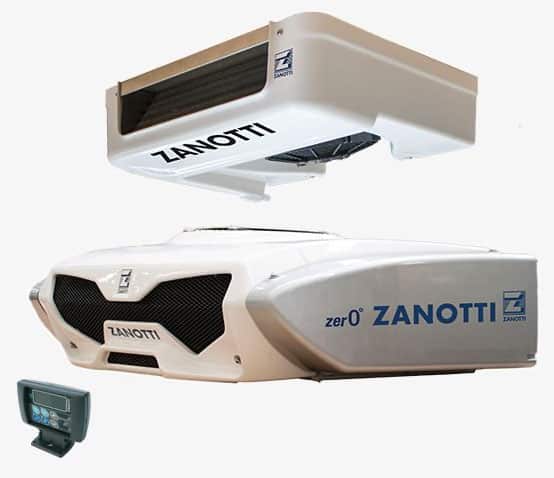
The Zanotti Z200 Refrigeration Systems are the tiniest Direct Drive rooftop units in the Zanotti range, capable of delivering the temperatures you require when the temperature rises above 40°C!
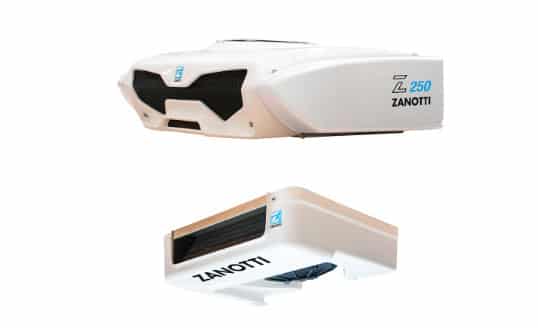
The Zanotti Z250 Refrigeration Systems are the light Direct Drive rooftop units in the Zanotti range, capable of delivering the temperatures you require when the temperature rises above 40°C!
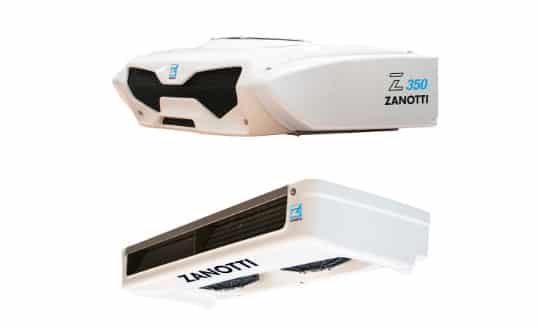
Zanotti Z350 Refrigeration Systems are Powerful Direct Drive rooftop units available from the Zanotti range, capable of delivering the temperatures you need when the mercury hits 40°C! Although the Z350 is not the most robust refrigeration system in the Zanotti Refrigeration Zero Range, it is still an impressive unit suitable for Large vans and Small and Medium Refrigerated Truck Bodies.
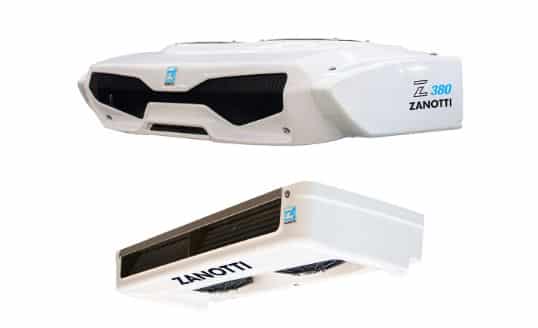
The Zanotti Z380 Refrigeration Systems are the most robust Direct Drive rooftop units in the Zanotti Zero range, capable of delivering the temperatures you require when the temperature rises above 40°C! The Zanotti Refrigeration Z380 unit is appropriate for the Largest vans and Medium Refrigerated Truck Bodies for six pallets, Large van cab chassis, and Small refrigerated trucks for sale. Its unique two-fans condensing unit will bring down the temperature faster than any other Zero refrigeration system in the range and perform best on hot days.
Direct-Drive Units work by pumping refrigerant through the system with the vehicle’s engine compressor. All units are made from the highest quality Italian parts and manufactured in Italy. It is very durable in all weather conditions, with all the hardware cased in sturdy ABS plastic. The Zanotti Zer0° Transport Refrigeration Units are aesthetically advanced, with innovative Italian design in every aspect of the construction – designed to be streamlined to resist drag while efficiently cooling the system while on the move.
Technical Details
Models: Z200, Z250, Z350, Z380
| Ambient (°C) | -20°C – +45°C |
|---|---|
| Refrigerant | R134a | R452A |
| Mounting | Roof and front wall |
| Cooling Capacity Range (set point 0°C) | 2.2kW to 3.8kW |
| Cooling Capacity Range (set point -20°C) | 1.2kW to 2kW |
Models: Z380 Multi (standard and narrow)
| Ambient (°C) | -20°C – +45°C |
|---|---|
| Refrigerant | R134a | R452A |
| Mounting | Roof and front wall |
| Cooling Capacity Range (set point 0°C) | Up to 3.5kW |
| Cooling Capacity Range (set point -20°C) | Up to 2.7kW |
Refrigerators are a must-have in every kitchen. Why don’t we take it a step further for trucks to have a refrigerated system too? With commercial vehicle sales through the roof, Zanotti can help these vehicles create sustainable truck refrigeration systems at a reasonable cost.
Read our latest article on What are refrigerated trucks for?

